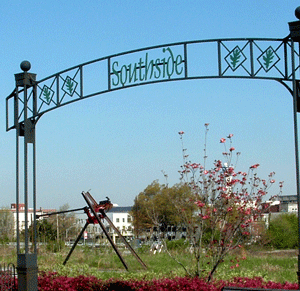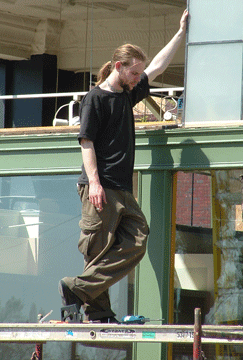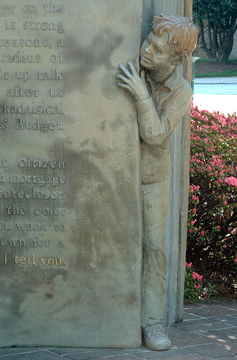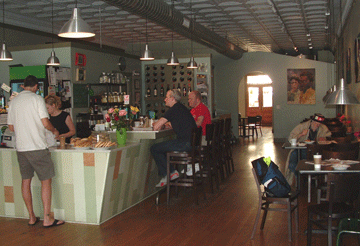
looks like someone working away from the land, in one of the industrial plants in the region or in an office. An unexpected suburban subdivision, fifteen large homes on the side of a lake, tells of newcomers to the area, growth, or urban flight; people willing to drive ten or twenty miles to work so they could live in a large modern home. On the edge of town the houses that weren't actually boarded up had ripped screens, sparse tattered furniture on their crooked porches, and weeds in their yards instead of flowers. Folks here didn’t have time or motivation to care for their homes – renters, perhaps, in houses not maintained by the owners because the rents were too low to make it worth their while.
A mile further, the houses were smaller but neater, with well-kept lawns and tidy window fittings. These people had a stake in their homes and their neighborhood, they were working it keep it up. The city was too. The streets were paved with strips and curves of brick, passive devices to make traffic move more slowly in response to citizen concern about speeding. One
intersection was landscaped as a neighborhood “gateway,” neat beds of pansies planted around decorative signs proclaiming this to be Asheboro. Those streetscape improvements speak of both the city’s and the residents’ efforts to encourage neighborhood.
Past Asheboro, in the shadow of a few tall downtown buildings, a major development was in process. Several rows of new townhouses were fully built, and many more under construction. Banners hung from lampposts proclaiming this to be Southside. Several big old homes were undergoing renovation, also graced with Southside signs. The new homes were varied; townhouses, apartments, an elegant house with wide porches on the first and second floors. The signs made it clear that this was all one big development, but the design clearly showed that someone was trying hard to create an urban area on the southern edge of the city rather than a suburban community of big homes with wide lawns.
Across the street, I spotted a couple in front of a pair of older brick homes, and stopped to ask them what was going on in the neighborhood. I lucked out. Instead of thinking me nuts, they turned out to be in real estate and had grown up in Greensboro, so they knew and cared about the town. He had gotten into urban revitalization ten years earlier, renovating an old fire station that dated back to the days of horse-drawn fire coaches. He owned the two older brick homes; the Southside development was influencing the


